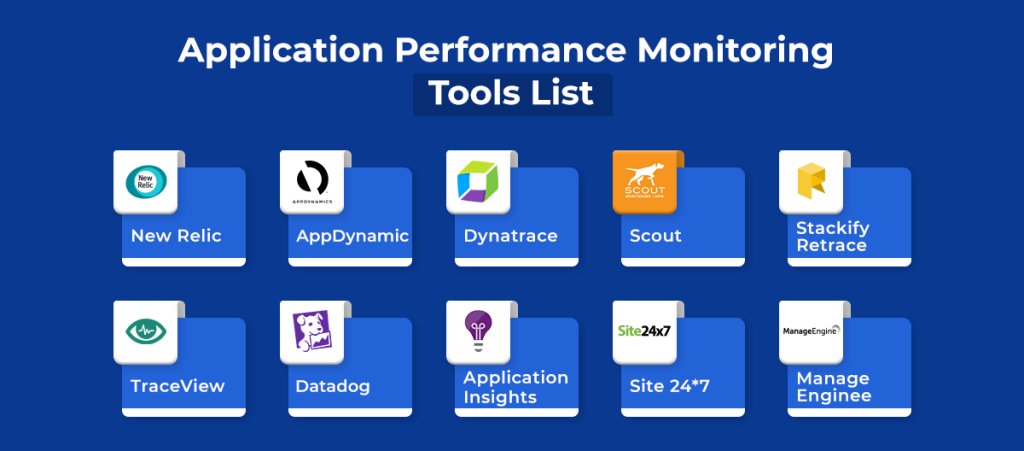
In 2024, the performance monitoring landscape is rich with diverse options, each catering to specific needs and offering unique advantages. Here’s a glimpse into some popular categories and notable tools:
Application Performance Monitoring (APM):
- Datadog: A versatile platform for monitoring application performance, infrastructure metrics, and user experience. Offers real-time dashboards, AI-powered insights, and customizable alerts.
- Dynatrace: Provides AI-driven application monitoring across various environments, including cloud, hybrid, and microservices. Focuses on automatic root cause analysis and proactive issue detection.
- New Relic: A comprehensive web-based tool for monitoring full-stack applications, infrastructure, and user experience. Offers real-time insights, code-level analysis, and integrations with popular development tools.
Infrastructure Monitoring:
- Prometheus: A popular open-source tool for monitoring system metrics and events. Offers flexible querying and alerting capabilities, integrates well with Grafana for visualization.
- Nagios: A mature platform for monitoring infrastructure health and performance. Features extensive alerting options, plugins for various services, and strong community support.
- Datadog Infrastructure Agent: A lightweight agent for collecting metrics and logs from infrastructure components. Integrates seamlessly with the Datadog platform for unified monitoring.
Synthetic Monitoring:
- Pingdom: Simulates user journeys from various locations to monitor website performance and availability. Offers real-time alerts, waterfall charts, and historical performance data.
- Catchpoint: Provides synthetic monitoring with advanced features like multi-step transactions, mobile device emulation, and global monitoring locations.
- Keynote Systems: Offers comprehensive synthetic monitoring for websites, APIs, and mobile apps. Includes real-time dashboards, visual scripting, and advanced performance analysis.
Logging & Analytics:
- ELK Stack (Elasticsearch, Logstash, Kibana): A popular open-source combination for collecting, storing, and analyzing logs. Offers powerful search capabilities and visualization tools.
- Graylog: Another open-source option for log management, featuring customizable dashboards, alerting, and integrations with various systems.
- Splunk: A commercial platform for log management and analytics, offering advanced features like real-time search, anomaly detection, and machine learning insights.
Choosing the right tools depends on your specific needs:
- Consider the scope of your monitoring needs: Are you monitoring applications, infrastructure, or both?
- Evaluate your budget and technical expertise: Some tools are open-source and require technical setup, while others are commercial with managed services.
- Think about your desired features: Do you need real-time monitoring, AI-powered insights, or advanced analytics?
- Look for integrations and compatibility: Ensure the tools work well with your existing systems and tools.
The best approach often involves combining different tools and platforms for comprehensive performance monitoring.

👤 About the Author
Rahul is passionate about DevOps, DevSecOps, SRE, MLOps, and AiOps. Driven by a love for innovation and continuous improvement, Rahul enjoys helping engineers and organizations embrace automation, reliability, and intelligent IT operations. Connect with Rahul and stay up-to-date with the latest in tech!
🌐 Connect with Rahul
-
Website: MotoShare.in
-
Facebook: facebook.com/DevOpsSchool
-
X (Twitter): x.com/DevOpsSchools
-
LinkedIn: linkedin.com/company/devopsschool
-
YouTube: youtube.com/@TheDevOpsSchool
-
Instagram: instagram.com/devopsschool
-
Quora: devopsschool.quora.com
-
Email: contact@devopsschool.com

